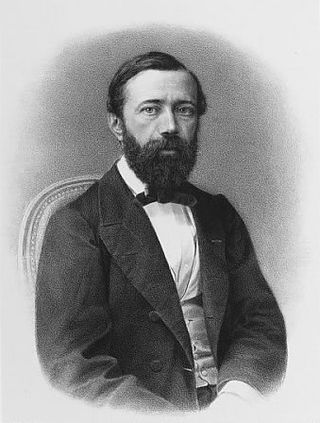
Charles Émile Blanchard was a French zoologist and entomologist.

The family Mycteridae is a small group of tenebrionoid beetles with no vernacular common name, though recent authors have coined the name palm and flower beetles. The family Mycteridae is distributed worldwide. There are about 30 genera and 160 species in three subfamilies Mycterinae, Hemipeplinae and Lacconotinae (=Eurypinae). These 3 subfamilies are extremely diverse in appearance and are sometimes difficult to have a present diagnosis of the adults at the family level. About 20 species are found in Australia, species of three genera are found in North America The larvae are generally flattened and typically inhabit the spaces between leaves or the bases of fronds, where they appear to consume fungi.

The Chamaemyiidae are a small family of acalyptrate flies with less than 200 species described worldwide. The larvae of these small flies are active and predatory and are often used for biological control of aphids, scale insects, and similar pests. Chamaemyiid fossils are poorly represented in amber deposits, but a few examples are known from the Eocene epoch onwards.

Edward Litt Leman Blanchard, often referred to as E. L. Blanchard, was an English writer who is best known for his contributions to the Drury Lane pantomime. He began writing plays and other literature to support himself as a teenager after his father died. A succession of pantomimes supplied by him to one or other of the minor theatres, under the nom de plume of Francisco Frost, soon acquired for him a reputation as the contriver of these dramatic whimsicalities. He soon became a prolific creator of dramas and eventually gained critical acclaim for his works. He also served as a newspaper drama critic and mentored other writers.
Phycopterus is a genus of moths of the family Erebidae first described by Émile Blanchard in 1852. The species are all found in Chile.
Celidosphenella is a genus of tephritid or fruit flies in the family Tephritidae.

Neotephritis is a genus of tephritid or fruit flies in the family Tephritidae.
Trypanaresta is a genus of tephritid or fruit flies in the family Tephritidae.
Lamproxynella is a genus of tephritid or fruit flies in the family Tephritidae.
Pseudoedaspis is a genus of tephritid or fruit flies in the family Tephritidae.

María Blanchard was a Spanish painter. She was known for developing a unique style of Cubism.

Goniini is a tribe of parasitic flies in the family Tachinidae. Members of Goniini are distinguished from other Tachinidae by laying small "microtype" eggs that hatch only after being ingested by a host.
Dyseuaresta is a genus of tephritid or fruit flies in the family Tephritidae.

The Argentine presidential election of 1853 was held on 1 November to choose the first president of the Argentine Confederation for the period 1854-1860. Justo José de Urquiza was elected president by a wide margin.

The Argentine presidential election of 1860 was held on 6 February to choose the second president of the Argentine Confederation. Santiago Derqui was elected president.

Dilophus is a genus of March flies in the family Bibionidae. There are at least 200 described species in Dilophus.
Acrometopia is a genus of flies in the family Chamaemyiidae.
Pseudoedaspis decorata is a species of tephritid or fruit flies in the genus Pseudoedaspis of the family Tephritidae.
Pseudoedaspis striolata is a species of tephritid or fruit flies in the genus Pseudoedaspis of the family Tephritidae.
Elasmopalpus angustellus is a species of snout moths in the diverse subfamily Phycitinae. It was described by Émile Blanchard in 1852.









